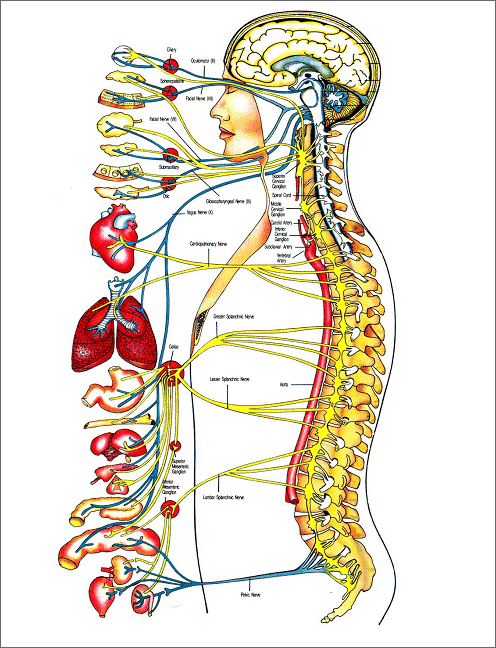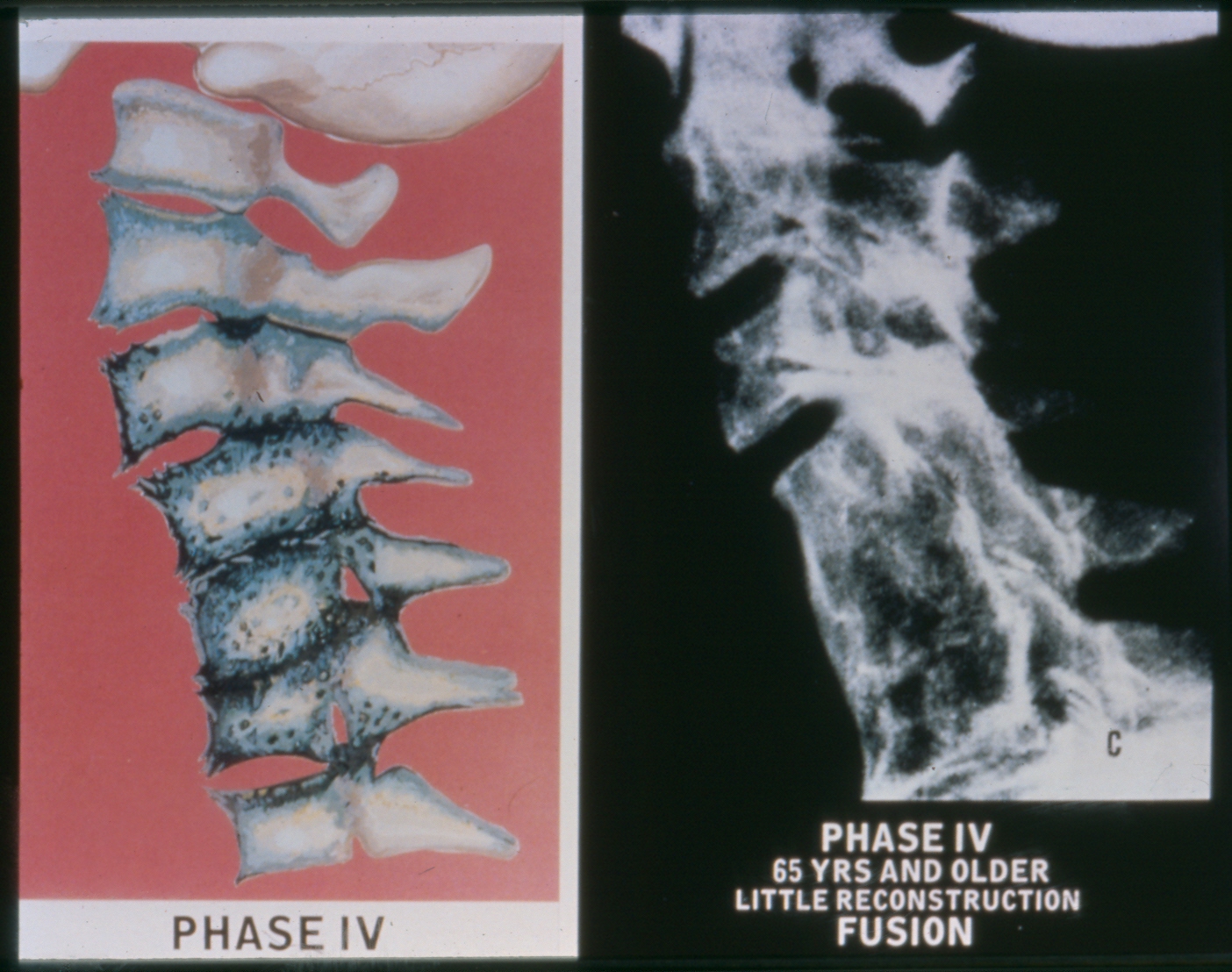 |
 |
| Chiropractic truly does - add life to years, and years to life. |
|
WELCOME
|
Frequently Asked QuestionsWhat can I do at home for the pain until my next visit? |
|
WHAT CAN I DO AT HOME FOR THE PAIN UNTIL MY NEXT VISIT?Unless I have specifically told you otherwise you can always use ice to help relieve the discomfort. Do NOT put several layers of towel between you and the ice. You may put a single layer of washcloth between you and the ice, but nothing thicker. The ice should first feel cold, then it should give you a burning sensation and finally you should feel numb. The numb feeling is exactly what we are looking for. If you did not purchase an ice pack from my office you can make your own by putting a little water in a “Zip lock” bag, sealing the bag and then laying it flat in the freezer until it freezes. Another good way to use ice, is to freeze a small paper or styrofoam cup full of water. Then someone can use the ice in the cup to massage your painful area. As the ice melts they can just tear away the cup. Make sure you are following all of my recommendations in the "Do's and Don'ts" section of this disk!! If your pain increases substantially you should give me a call. If I am not in the office leave a message on the emergency extention (option #1). This will page me. |
||
What is chiropractic?The term itself is from the Creek: Chiro (hand), Praktic (to adjust). The history of chiropractic as it is known in the United States dates back to 1895. Chiropractic is a branch of the healing arts which is based upon the understanding that good health depends, in part, upon a normally functioning nervous system (especially the spine, and the nerves extending from the spine to all parts of the body). Chiropractic stresses the idea that the cause of many disease processes begins with the body's inability to adapt to its environment. It looks to address these diseases not by the use of drugs and chemicals, but by locating and adjusting a musculoskeletal area of the body which is functioning improperly. Chiropractic’s approach is to establish and maintain optimal physiological activity by correcting abnormal structural relationships. Its goal is to organize the body in such a manner as to enable it to utilize its own biological resources for a return to normal function. Chiropractic also places an emphasis on nutritional and exercise programs, wellness and lifestyle modifications as well as patient education for promoting physical and mental health. While chiropractors make no use of drugs or surgery, Doctors of chiropractic do refer patients for medical care when those interventions are indicated. In fact, chiropractors, medical doctors, physical therapists and other health care professionals now work as partners in occupational health, sports medicine, and a wide variety of other rehabilitation practices. |
||
How does chiropractic differ from allopathic (“medical”) health care?Although both of these primary health care providers start out with a very similar education and utilize many of the same diagnostic tools (history, x-ray, MRI, CT scan,
nerve testing, blood test, lab test, etc.) the philosophical differences and principal tools of treatment are the defining difference. Medical doctors tend to treat immediately life threatening conditions (gun shot wound) and symptoms (high temperature). Their most important tools of treatment are drugs and surgery. Chiropractors, on the other hand, tend to treat the underlying cause of the symptom and they emphasize prevention. The key treatment tools of a chiropractor are the correction of structural problems (adjustments), nutrition and education. Medicine treats the specific area where the problem is, while chiropractic treats your body as a whole. The Obviously, both disciplines are necessary and have their place. More and more, both professions are working together to make sure you are in the right place, getting the right kind of care for your problem. |
||
|
||
What does chiropractic treat?The conditions which doctors of chiropractic address are as varied and as vast as the nervous system itself. All chiropractors use a standard procedure of examination to diagnose a patient's condition and arrive at a course of treatment. Doctors of chiropractic use the same time-honored methods of consultation, case history, physical examination, laboratory analysis and x-ray examination as any other doctor. In addition, they provide a careful chiropractic structural examination, paying particular attention to the spine. Chiropractic treats most neuromusculoskelatal (having to do with nerves, muscles or bones) problems. This means that chiropractic works well on the following:
Chiropractic is also recommended for many other types of illnesses; especially nutritional problems. |
 |
|
 |
||
What was the exam for?
|
||
I have pain in my leg/foot (arm/hand), why are you treating my back (neck)?All of the nerves associated with pain from the neck down exit through the spine. The nerves which are related to pain in the upper extremities (shoulder, arm and hand) generally exit from the spine in the neck. While the nerves linked to pain in the lower extremities (hip, leg and feet) exit the spine in the low back. Often, the pain you are experiencing in your extremities is really due to a problem in your back (subluxation, pinched nerve, spasm, swelling, etc.). When one, or a combination, of these is the cause of your pain, chiropractic is particularly effective in treating the problem. The mechanism is similar to the relationship of a ceiling light and the corresponding switch on the wall. When you turn the switch off the light on the ceiling goes off. The cause of the light going off had nothing to do with the bulb in the ceiling. Depending on your exact circumstance, you may be treated with any one of, or a combination of, spinal manipulation, physiotherapy, exercise, alteration in activities of daily living, or nutrition. |
||
|
||
 |
 |
|
What is a subluxation complex?A subluxation is a slight dislocation or biomechanical malfunctioning of the vertebrae (bones of the spine) Subluxation can irritate nerve roots and blood vessels which branch off from the spinal cord between each vertebrae. This irritation can cause pain and dysfunction in muscle, lymphatic and organ tissue as well as imbalance in the normal body process. |
||
 |
||
Near Normal |
 |
|
Phase I - Subluxation |
 |
|
Phase II – Subluxation Degeneration |
 |
|
Phase III – Subluxation Degeneration |
 |
|
Phase IV – Subluxation Degeneration |
 |
|
How did I get this subluxation?There are three ways in which people get subluxations: |
||
What is an adjustment?An “adjustment,” as doctors of chiropractic use the term, means the specific manipulation of vertebral joint, or other body joint, which have abnormal movement patterns or fail to function normally. Doctors of chiropractic (DC) spend years learning motion palpation (the art of examining by movement or touch) and other forms of spinal examining procedures, so that they can administer specific and appropriate spinal adjustments. Once the DC has identified the problem, he/she will begin care by way of these adjustments or “manipulations.” Particular attention will be paid to that area of your spine where a spinal derangement or "subluxation" has been detected. The adjustment is usually given by hand or “activator” or blocking type instruments, and consists of applying pressure to the areas of the spine that are out of alignment or that do not move properly within their normal range of motion. Doctors of chiropractic use many sophisticated and varied techniques, and the specific procedure to be used will be determined and explained completely to you following a careful evaluation of your radiographs (if taken) and physical findings. Under normal circumstances, adjustments don’t hurt. The patient may experience a minor amount of discomfort during the adjustment which lasts only seconds. Adjustments or manipulations are extremely safe. The risk factor is estimated to be in excess of 1 million to 1. |
||
 |
||
What can I expect? |
||
|
||
|
||
 |
||
I’m feeling better and don’t understand why I need to keep getting treatments?
|
||
Why isn’t my pain going away faster?Things that affect how fast you will heal:
|
||
Why do I have this pain?Your pain could be due to any one of many causes. The most common causes of neuromusculoskeletal (having to do with nerves, muscles and/or bones) are one or more of the following:
|
||
What is this going to cost me/BillingThere are many ways for you to pay for the care you will receive in my office. I have listed many of these payment options below. Most of these payment options have even more options! The way we pay for health care is becoming more complex (and convoluted) on a daily basis. Even though my office has made every resonable effort to investigate your particular situation the company you are insured with often gives us incorrect information and they are not bound by the information they have given us. We will make every effort to keep you informed and work with you in any resonable way we can. If you ever have any questions about your bill, please feel free to ask at the front desk. The following is a list of the more common ways your care may be paid for:
|
||
 |
||
|
Copyright © 2006 Cerebral Investments Inc. | Privacy Policy | Site Map | Contact Us |